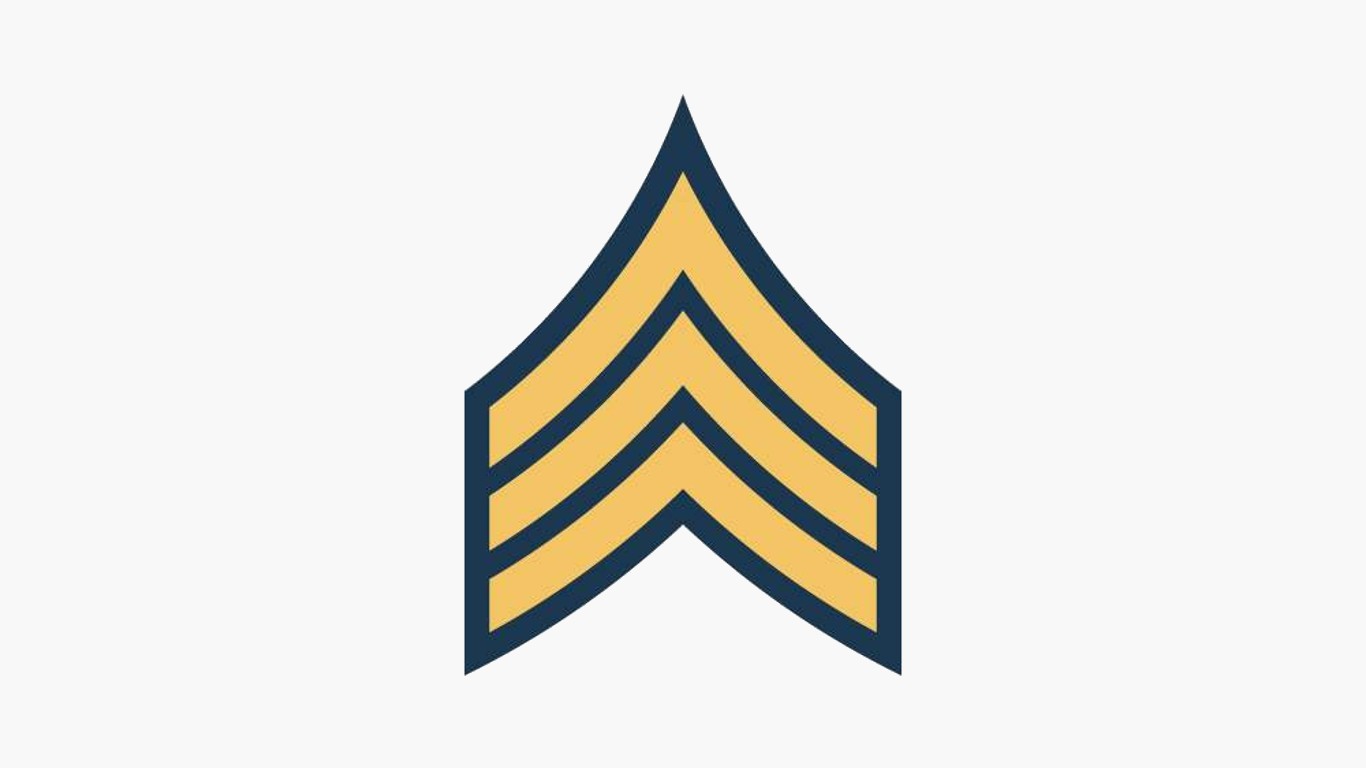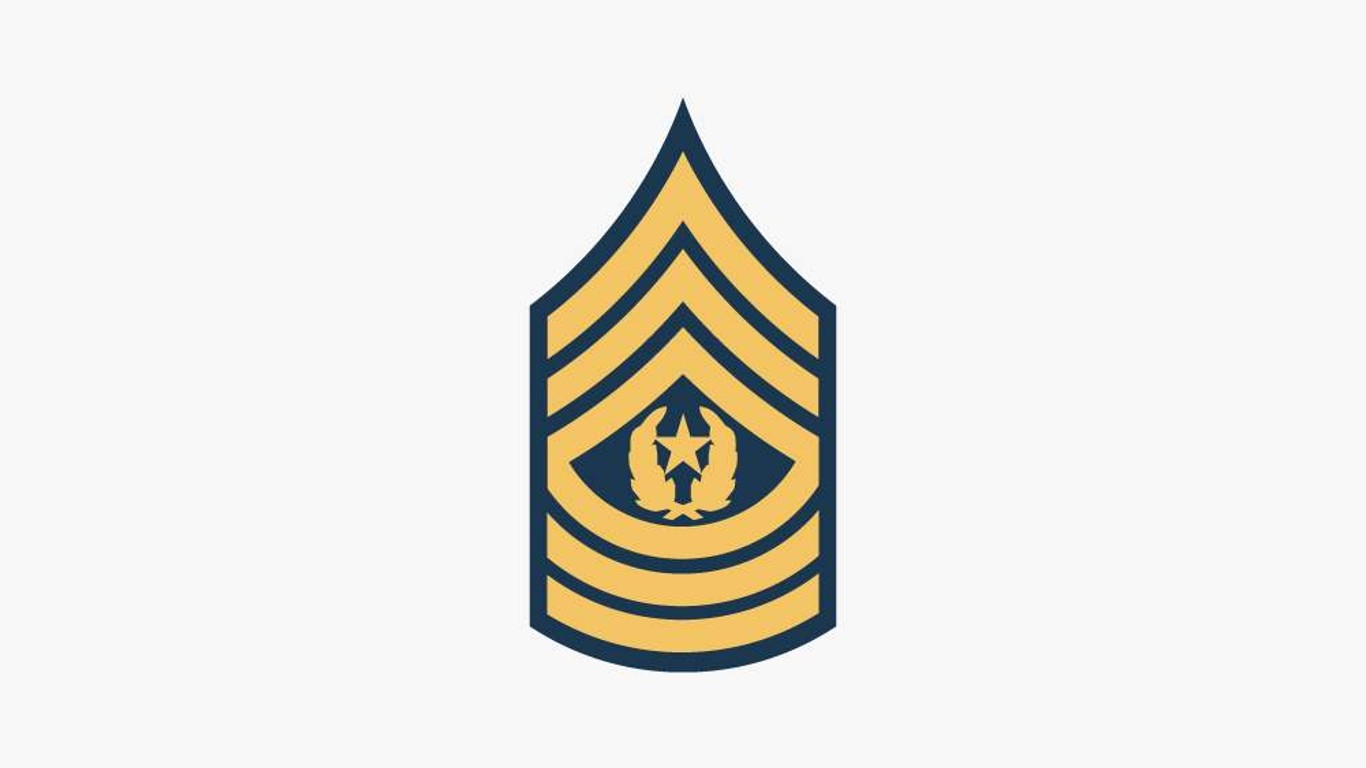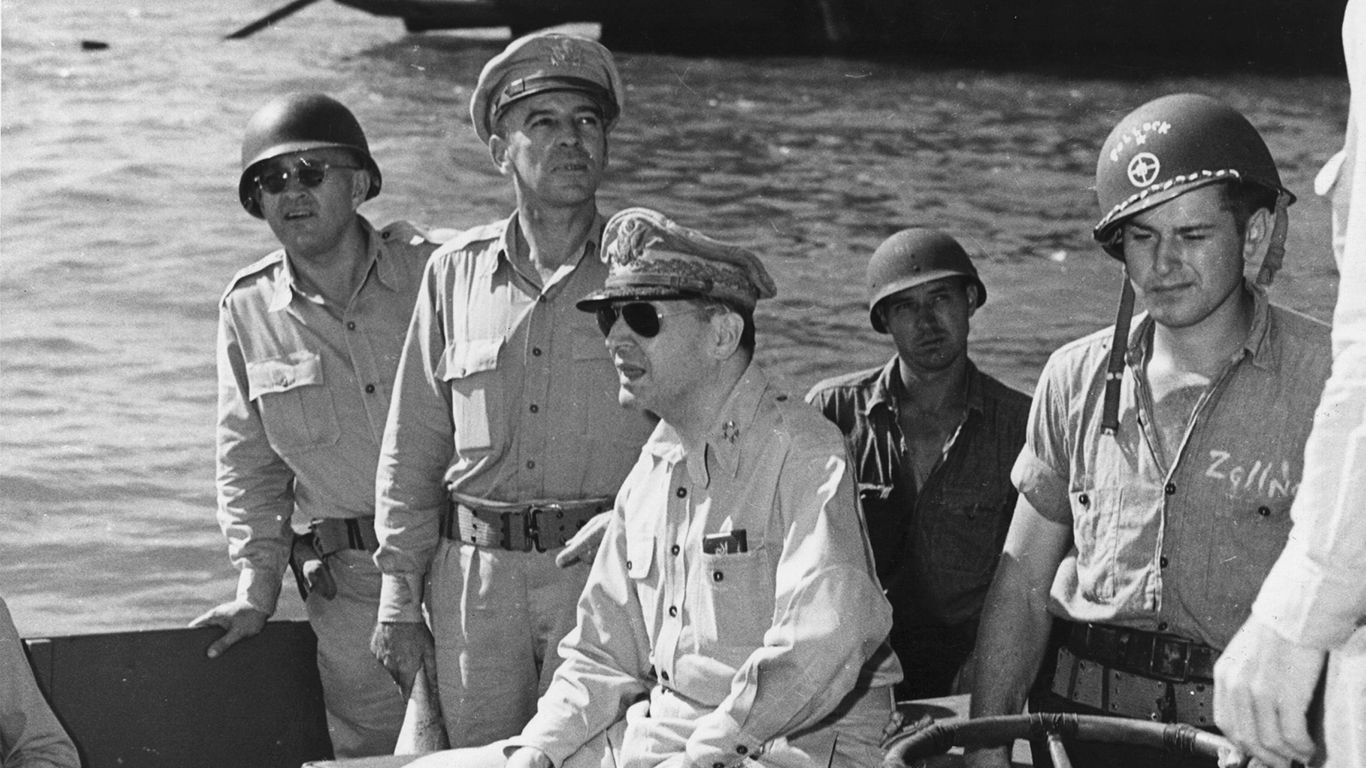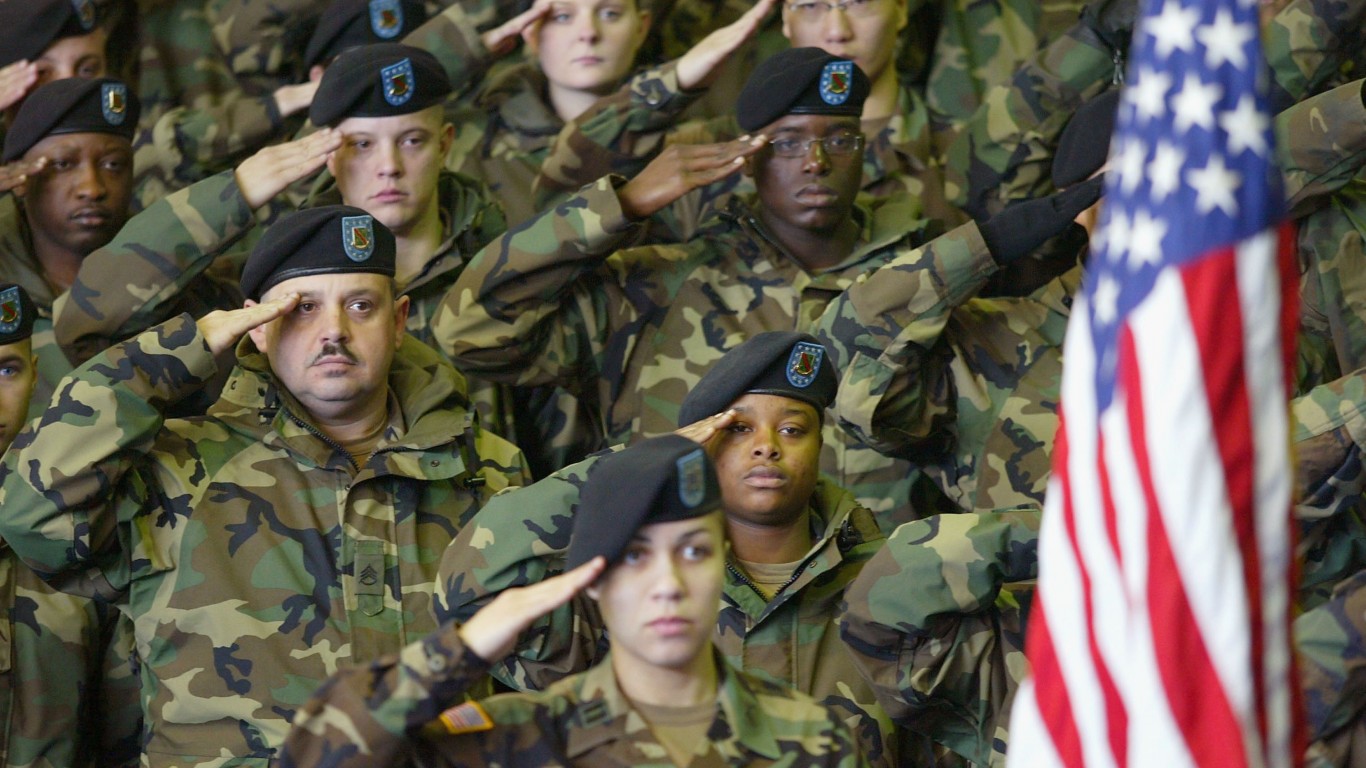
The United States Army is the largest branch of the U.S. military, with over 480,000 active personnel. Army ranks are divided into three categories: enlisted soldiers, warrant officers, and commissioned officers. 24/7 Wall St. reviewed every rank and insignia from the official U.S. Army website.
Among the enlisted members, there are 13 ranks, broken into three groups: junior enlisted (pay-grades E-1 through E-4), non-commissioned officers (E-4 through E-6), and senior non-commissioned officers (E-7 through E-9). Junior enlisted members are promoted automatically, based on their time in service and their time in their particular pay-grade. New recruits start as privates and eventually reach the rank of private first class. They may then become specialists (E-4) after serving a minimum of two years and undergoing specific training in their field, and eventually corporals (E-4) after taking the Army’s Basic Leadership Course.
Advancing further up the ranks to sergeant (E-5) or staff sergeant (E-6) requires leadership training as well as high performance in a graded Army-wide competition that awards points for physical fitness, education, firing range scores, awards, and other attributes. Seargents oversee soldiers in their daily activities and serve as first-line leaders who have the most direct impact on the soldiers. Sergeant major (E-9) is the highest position possible for enlisted personnel. There is only one sergeant major in the army, who oversees all non-commissioned officers and serves as an advisor to the four-star general.
To become a warrant officer 1 (WO1) – the highest of non-commissioned officers – enlisted officers must have several years of expertise, a recommendation from their commanding officer, and approval from a selection board. There are five warrant officer ranks, who serve as combat leaders, experts, trainers, and operations managers.
Commissioned officers plan missions, give orders, and serve as the key problem solvers in the Army. There are eleven commissioned officer ranks, including lieutenants, captains, majors, colonels, and generals. Four star general is the highest rank and the senior commissioned officer, except in wartime, when a five star general of the Army may be appointed. The last five star generals of the Army served during and after World War II, and included General Dwight D. Eisenhower and General Douglas MacArthur. Here are 50 of the most decorated war heroes in American history.
Click here to see every rank in the U.S. Army.

1. Private
[in-text-ad]

2. Private First Class

3. Specialist

4. Corporal
[in-text-ad-2]

5. Sergeant

6. Staff Sergeant
[in-text-ad]

7. Sergeant First Class

8. Master Sergeant

9. First Sergeant
[in-text-ad-2]

10. Sergeant Major

11. Command Sergeant Major
[in-text-ad]

12. Sergeant Major of the Army

13. Warrant Officer 1

14. Chief Warrant Officer 2
[in-text-ad-2]

15. Chief Warrant Officer 3

16. Chief Warrant Officer 4
[in-text-ad]

17. Chief Warrant Officer 5

18. Second Lieutenant

19. First Lieutenant
[in-text-ad-2]

20. Captain

21. Major
[in-text-ad]

22. Lieutenant Colonel

23. Colonel

24. Brigadier General
[in-text-ad-2]

25. Major General

26. Lieutenant General
[in-text-ad]

27. General

28. General of the Army
It’s Your Money, Your Future—Own It (sponsor)
Retirement can be daunting, but it doesn’t need to be.
Imagine having an expert in your corner to help you with your financial goals. Someone to help you determine if you’re ahead, behind, or right on track. With SmartAsset, that’s not just a dream—it’s reality. This free tool connects you with pre-screened financial advisors who work in your best interests. It’s quick, it’s easy, so take the leap today and start planning smarter!
Don’t waste another minute; get started right here and help your retirement dreams become a retirement reality.
Thank you for reading! Have some feedback for us?
Contact the 24/7 Wall St. editorial team.
 24/7 Wall St.
24/7 Wall St. 24/7 Wall St.
24/7 Wall St. 24/7 Wall St.
24/7 Wall St. 24/7 Wall St.
24/7 Wall St.